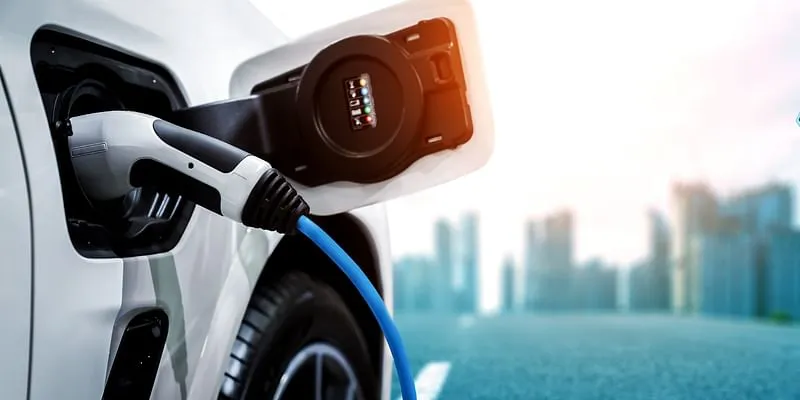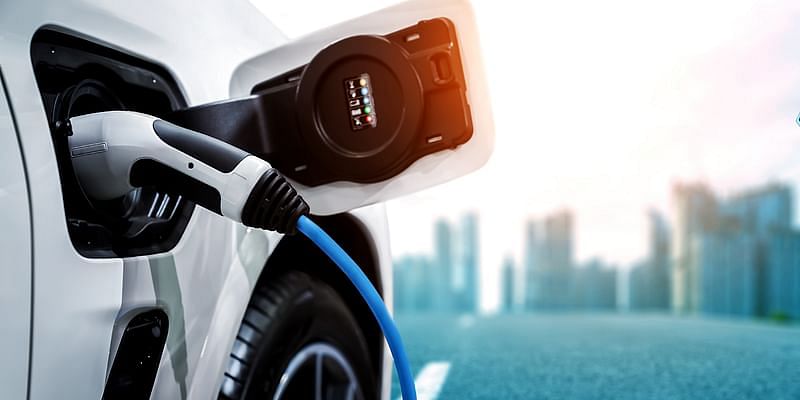Electric vehicles (EVs) are fast becoming mainstream. The EV industry will see more than 100% jump in EV sales in the current fiscal, compared to the previous year.
More people are embracing the adoption of clean mobility options for their daily commute, and with the rapid growth of new-age mobility solutions like shared mobility and delivery-specific EVs, further impetus is given to the auto industry as a whole.
According to a report by Bain & Company, EVs will become a $100 billion+ opportunity in India by 2030.
The Union Budget 2022 was a step in the right direction in introducing forward-looking policies to accelerate EV adoption. The key announcement made in the 2022 budget of having a standalone Battery-as-a-Service (BaaS) policy has seen significant progress since.
We believe that the growth of EVs in India will be driven by electric two-wheelers and new mobility solutions like Shared Low Speed Electric Vehicles (LSEVs). LSEVs are light-weight and don’t need a driving license. Over the past two years, Mobility-as-a-Service (MaaS) solutions have been adopted by diverse consumer categories. Shared LSEVs fulfill many intra-city use-cases and cuts across multiple user demographics, from delivery executives and self-employed women to elderly people and student riders.
Shared e-mobility also promotes usage of Public Transport systems like Metro, city buses, etc, by providing first-and-last mile connectivity, thus having a multiplier positive effect on decongestion as well as road pollution. So, affordability should be a focus area.

The 2023 budget should encourage new-age mobility solutions through policies that help increase their adoption. Benefits under the FAME-II, which is currently proposed to end on March 31, 2024, should be increased in its scope to include Mobility-as-a-Service and Personal LSEVs.
Shared e-mobility is a desirable option for a populous nation like India, because it gives an easy entry point into EV adoption, while providing affordable rental plans and creating the necessary EV infrastructure.
Making EVs a priority lending sector can give access to affordable finance and can help many people in the services sector who fall in the low-income zone to get into the EV bandwagon.
Uniform GST is also an important area of focus for the budget. The government has reduced the GST on batteries from 18% to 5% for batteries that come with EVs. However, high GST on additional float batteries, which is an important prerequisite in BaaS businesses should be rationalised.
BaaS operators need to maintain an extra float (30-50% extra batteries over and above the subscription) to manage demand-supply dynamics of charged batteries. Reduction of GST from 18% to 5% on the overall batteries, including the battery float, purchased for deployment in EVs will help reduce the burden on BaaS operators.
Making GST rates uniform across the whole supply chain will further support the ecosystem, for instance, bringing GST to 5% at EV Charging and Battery Swapping Station transactions.
At present, corporate customers get input tax credit on the GST paid at EV Charging and Battery Swapping Stations but retail customers have to pay for it from their pockets.
This has to be streamlined to encourage adoption of battery swapping at public charging stations. Further, incase of inverted duty structure, services input credit should also be eligible for refund as it will not only unblock much needed funds but also remove tax hurdles throughout the value chain.
All in all, the Budget for 2023-24 can set the tone for the next phase of EV growth, which will be much larger in scale, scope and impact.
Amit Gupta is the Co-founder and CEO of Yulu, a shared micro-mobility service provider. Before Yulu, he co-founded InMobi, India’s first profitable internet unicorn. Amit is also an active angel investor and has invested in multiple startups across India and the US.










